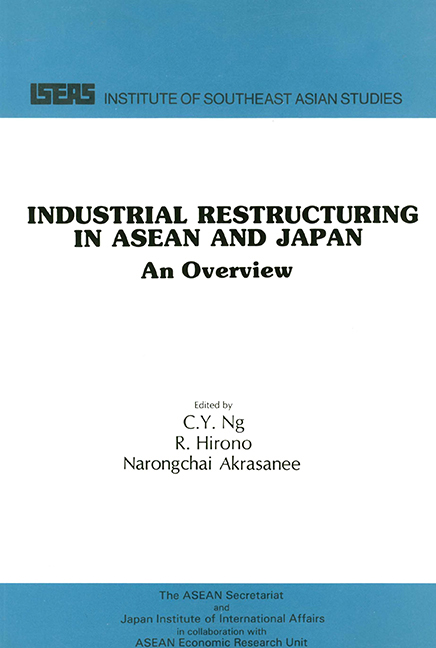Foreword
Published online by Cambridge University Press: 21 October 2015
Summary
One of the central objectives of the Association of Southeast Asian Nations (ASEAN), as embodied in the Bangkok Declaration under which ASEAN was founded, is the promotion of Southeast Asian Studies. In this context, ASEAN warmly welcomed the offer of Mr Zenko Suzuki, Prime Minister of Japan, in early 1981 to support the launching of an ASEAN Regional Studies Promotion Programme (ARSPP).
After extensive consultations among ASEAN member countries and between ASEAN and Japan, it was agreed that the ASEAN Regional Studies Promotion Programme, initially to extend over a period of five years (FY 1982–86), should focus on policy-oriented socio-economic research. Thus far, the co-operative effort has resulted in the publication of two joint ASEAN-Japan overview papers: ASEAN-Japan Industrial Co-operation: An Overview published in September 1984 resulting from the first phase; and Effective Mechanisms for the Enhancement of Technology and Skills in ASEAN: An Overview published in March 1986, from the second phase. This volume is the product of the third phase of the programme on “Industrial Restructuring and Adjustment for Japan-ASEAN Investment and Trade Expansion”. Like the two previous volumes, it is based on the results of studies conducted by the Japanese research team and the ASEAN country research teams.
The recent history of ASEAN-Japan relations has been marked by a degree of ambivalence. As the first Asian nation to industrialize successfully and to have risen as a phoenix from the ashes of war-time destruction to the leading heights of industrial and technological power, Japan has always been regarded with a degree of awe and admiration by its southern neighbours. Such awe and admiration have, however, been tinged with a certain amount oi anxiety, especially as the impact of Japan's post-war economic expansion becomes increasingly felt in the ASEAN region.
On the Japanese side, historical circumstances and the need for economic reconstruction in the early post-war years made it unavoidable that its external relations were initially to a large extent oriented towards the West, especially the United States.
- Type
- Chapter
- Information
- Industrial Restructuring in ASEAN and JapanAn Overview, pp. xi - xiiPublisher: ISEAS–Yusof Ishak InstitutePrint publication year: 1987

